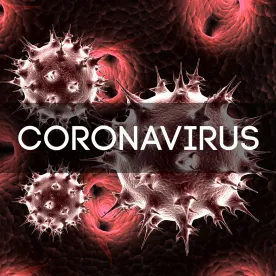Oregon has joined Michigan and Virginia in adopting an emergency temporary rule for COVID-19. On November 6, 2020, Oregon Occupational Safety & Health (Oregon OSHA), a division of the Department of Consumer & Business Services, issued a temporary Oregon OSHA COVID-19 rule. Temporary Rule 437-001-0744, Addressing COVID-19 Workplace Risks, took effect on November 16, 2020. It will remain in effect until May 4, 2021, unless repealed or revised before that time. With the growing number of emergency temporary standards among state plan states, it is increasingly likely that federal OSHA under a Biden Administration will also adopt such a standard.
Temporary Oregon OSHA COVID-19 Rule
Oregon’s temporary rule applies to all workplaces subject to Oregon OSHA jurisdiction. It requires comprehensive measures in the following areas to address coronavirus risks:
-
Physical Distancing. Employers must ensure that workflow and work activities are designed to eliminate the need for an employee to be within six feet of another individual to fulfill the employee’s job duties. If the employer determines and can demonstrate that the physical distancing is not feasible for certain activities, it does not have to comply with this rule.
-
Mask, Face Covering, or Face Shield Requirements. The employer must provide, at no cost to its workers, masks, face coverings, or face shields. The employer also must ensure that all individuals, including employees, part-time workers, temporary laborers, customers, vendors, patrons, and contractors present at the workplace or other premises under the employer’s control wear a mask, face covering, or face shield in accordance with the requirements of the Oregon Health Authority’s Statewide Mask, Face Covering, Face Shield Guidance.
-
Cleaning and Sanitation. An employer must regularly clean or sanitize shared equipment, all common areas, and high-touch areas under its control that employees or the public use. The rule sets forth the frequency of cleaning depending on the length of time a workspace is occupied. Employers also must provide employees with appropriate supplies and the time necessary to more frequently sanitize.
-
Posting Requirements. Employers must post the “COVID-19 Hazards Poster” provided by Oregon OSHA in a conspicuous manner in a central location where their workers can see it.
-
Building Operators. Not later than November 23, 2020, employers who operate or control buildings where the employees of other employers work must ensure they meet the sanitation requirements set forth in Subsection 3(c)(A) of the rule and post signs in areas where masks, face coverings, or face shields are required.
-
Ventilation Requirements. Not later than January 6, 2021, an employer must optimize the amount of outside air circulated through its existing HVAC system(s), whenever employees are in the workplace and the outdoor air quality index remains at either “good” or “moderate levels,” to the extent the system is capable of doing so.
-
Exposure Risk Assessment. Not later than December 7, 2020, employers must conduct a COVID-19 exposure risk assessment. For employers with multiple facilities that are substantially similar, the employers may develop their assessment by facility rather than site-by-site. However, the exposure risk assessment must include in the assessment of any site-specific information that affects the employees’ exposure risk to COVID-19. The risk assessment must address 13 questions currently located at Subsection 3(g)(C)(i)-(xiii) of the rule.
-
Infection Control Plan. By December 7, 2020, employers must establish and implement an infection control plan. The infection control plan is to be based on the risks set forth in Subsection 3(g) of the rule that implements the controls identified in 3(g)(C)(i)-(xiii), including but not limited to, staggered shifts, redesigning the workplace to accommodate physical distancing, and reducing the use of shared surfaces and tools. The infection control plan, at a minimum, must address the elements found in Subsection 3(h)(B)(i)-(vi), which includes a list of all worker tasks or job assignments that require the use of personal protective equipment, including respirators, necessary to minimize an employee’s exposure to COVID-19 and the procedures an employer will take to ensure it has an adequate supply of masks, face coverings, or face shields and personal protective equipment necessary to minimize employees’ exposure to COVID-19.
-
Employee Information and Training. By December 21, 2020, employers must provide workers with information and training regarding COVID-19.
-
COVID-19 Infection Notification Process. Employers must establish a process to notify exposed employees (those who were within six feet of a confirmed COVID-19 individual for a cumulative total of 15 minutes or more, regardless of whether one or both of them were wearing source control) that they had a work-related contact with an individual who has tested positive for COVID-19 and affected employees (those who worked in the same facility or in the same well-defined portion of the facility such as a particular floor) that an individual who was present in the facility has confirmed COVID-19. The rule excludes those settings where patients are hospitalized on the basis that they are known or suspected to be infected with COVID-19.
-
COVID-19 Testing for Workers. At no cost to workers, an employer must cooperate by making its employees and appropriate space available whenever a local public health agency or the Oregon Health Authority (“OHA”) indicates the need for COVID-19 diagnostic testing within the workplace.
-
Medical Removal. An employer must direct affected worker(s) to isolate at home and away from non-quarantined individuals whenever OHA, a local public health agency, or medical provider recommends an employee be restricted from work due to quarantine or isolation for COVID-19.
Workplaces at Exceptional Risk
For workplaces that Oregon OSHA deems to be at exceptional risk, employers must also comply with the specific provisions and additional requirements set forth in Section 4. Oregon OSHA defines “workplaces at exceptional risk” as “any setting (whether a healthcare setting or not) where an employee (including temporary and part-time employees) performs one or any combination of the following job duties”:
-
Direct patient care;
-
Environmental decontamination services in a healthcare setting;
-
Aerosol-generating healthcare or postmortem procedures;
-
Direct client service in residential care or assisted living facilities;
-
Emergency first responder activities;
-
Personal care activities that involve very close contact with an individual, such as toileting or bathing; and
-
Handling, packaging, cleaning, processing, or transporting human remains or human tissue specimens or laboratory cultures collected from an individual known or suspected to be infected with COVID-19.
The heightened requirements for workplaces at exceptional risk are:
-
Infection control training. In addition to the training requirements set forth in Subsection (3)(i) of the rule, by December 21, 2020, employers of workplaces at exceptional risk must provide infection control training. The training must include the provisions set forth in Subsection (4)(a)((A)-(C) of the rule and the elements set forth in Subsection (4)(b)(A)-(G).
-
Additional infection control plan requirements. By December 7, 2020, all employers covered by Section 4 of the rule must provide an infection control plan that includes the items set forth in Subsections 4(c)(A) and (B), in addition to the infection control plan requirements for all workplaces.
-
Additional sanitation requirements. In addition to the requirements in 3(c) of the rule, the employer must (1) develop procedures for routine cleaning and disinfection that are appropriate for SARS-CoV-2 in healthcare settings and (2) follow standard practices for disinfection and sterilization of medical devices contaminated with COVID-19 as described in the CDC Guideline for Disinfection and Sterilization in Healthcare Facilities, 2008.
-
Healthcare personal protective equipment. Employers must use a combination of standard precautions, contact precautions, droplet precautions, airborne precautions, and eye protection to protect healthcare workers with exposure or potential exposure to COVID-19. The precautions to use will depend on the requirements of the procedure and the disease status of the involved patient(s).
-
Heightened risk ventilation requirements. In addition to the provisions in 3(f) of the rule, employers must: (1) operate existing ventilation systems in hospitals, ambulatory surgical centers, and long-term care facilities providing skilled and/or intermediate level nursing care, if possible, in accordance with ANSI/ASHRAE Standards 62.1 and 62.2 (ASHRAE 2019a, 2019b) and (2) existing ventilation systems in other health care facilities must be upgraded to a minimum MERV 13 rating.
-
Barriers, partitions, and airborne infection isolation rooms in healthcare settings. An employer must employ the measures set forth in Subsection 4(g)(A)-(D) to protect healthcare employees, support workers, patients, and visitors from individuals known or suspected to be infected with COVID-19.
-
Screening in healthcare settings. The employer must screen and triage all individuals entering its healthcare setting for symptoms of COVID-19.
-
Medical removal provisions in healthcare settings. An exception to the quarantine and isolation provisions of 3(l) exists when a healthcare provider who would otherwise be quarantined or isolated remains on the job under OHA guidelines.
Industry-Specific Requirements
In addition to the above, those businesses that fall into certain industries, including construction operations and retail stores, must comply with additional requirements set forth in Appendix A to the rule.
Future Airborne Infectious Disease in the Workplace Rule
Oregon also intends to develop a permanent Airborne Infectious Disease in the Workplace rule. That rule will include intermediate requirements that are specific to COVID-19. Oregon OSHA planned to release the pre-proposal draft of the permanent rule by November 21, 2020 for stakeholder discussion. It will file the permanent rule the week of December 15, 2020 with a comment period that extends through March 15, 2021. Interested employers should frequently check Oregon OSHA’s website and be aware of upcoming deadlines so they do not miss an opportunity to submit comments on the permanent rule.





 />i
/>i

